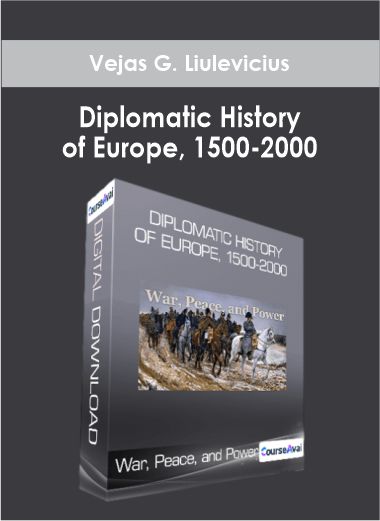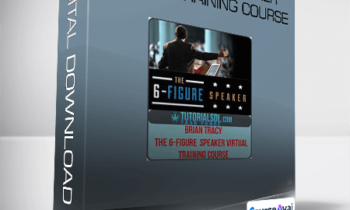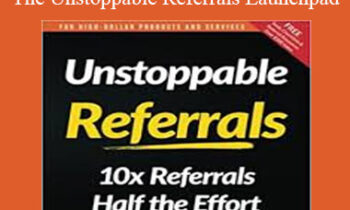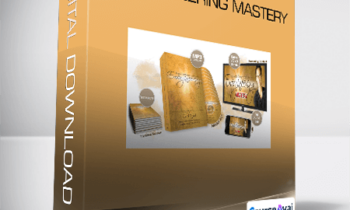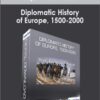$199.00 Original price was: $199.00.$38.00Current price is: $38.00.
This course is available now – Download it now
Same author: Vejas G. Liulevicius
Course Description: In 36 provocative lectures, he permits us to see thru the disclosing lens of statecraft to expose to us its effect on the war, peace, and energy and the way that effect could be felt withinside the future a method that historians were used of for hundreds of years.
All will be sent via email after you sign up.
 Purchase this course you will earn 38 Points worth of $3.80
Purchase this course you will earn 38 Points worth of $3.80Elevate your skills with the War, Peace, and Power – Diplomatic History of Europe, 1500-2000 course, available for just $199.00 Original price was: $199.00.$38.00Current price is: $38.00. on Utralist.com! Browse our curated selection of over 60,000 downloadable digital courses across diverse Everything Else. Benefit from expert-led, self-paced instruction and save over 80%. Start learning smarter today!
This course is available now – Download it now
Same author: Vejas G. Liulevicius
Course Description: In 36 provocative lectures, he permits us to see thru the disclosing lens of statecraft to expose to us its effect on the war, peace, and energy and the way that effect could be felt withinside the future a method that historians were used of for hundreds of years.
All will be sent via email after you sign up.
Purchase War, Peace, and Power – Diplomatic History of Europe, 1500-2000 courses at here with PRICE $199 $38
War, Peace, and Power – Diplomatic History of Europe, 1500-2000
Hide Full Description
Is there a reason behind this chaos that is going past the obvious: political ambition, non secular intolerance, the pursuit of national energy, or the worry about any other nation’s aspirations? Can we find out a hidden common sense that would in all likelihood provide an explanation for the Thirty Years’ War, the Napoleonic Wars, World Wars, and different examples of country-wide bloodletting? Is it feasible to formulate a significant motive towards which to reserve records as tumultuous as Europe’s, gaining insights that increase our know-how of Europe’s beyond and future, and possibly even of ours as well?
In War, Peace, and Power: Diplomatic History of Europe, 1500-2000, Professor Vejas Gabriel Liulevicius solutions those questions and extra as he gives everybody interested by the “why” of records a first-rate inspect the evolution of the European continent and the cutting-edge nation gadget. In 36 provocative lectures, he permits us to see thru the disclosing lens of statecraft to expose us its effect on war, peace, and energy and the way that effect could be felt withinside the future—an method that historians were the use of for hundreds of years.
“Diplomatic records is one of the oldest kinds of ancient analysis,” Professor Liulevicius notes. “Indeed, it is every so often traced returned all of the manners to Thucydides and the imaginative and prescient that he presented of Greek nation interplay and politics.
“Diplomatic records gives a highly effective highbrow device to apprehend how states relate to each other. Because states are nonetheless bearing on with each other today, it’s miles of undiminished relevance for our personal times…
“As we finish our path, we’re going to be capable of asking, ‘Where is Europe headed today, and what implications will observe for the arena at large?’ as we survey what had begun as a European nation gadget [but which] has now come to be an international gadget of states in global politics.”
Learn How Europe’s Most Pivotal Moments Shaped History
Far extra than only a records of ambassadorial missions and different diplomatic efforts, this path re-creates Europe’s maximum pivotal ancient moments—withinside the context in their times—displaying how current pressures and ancient precedent blended to persuade individuals, governments, structures, or even non-nation organizations.
These events would happen not only on history’s bloodiest battlefields but also in quieter settings where so many of the factors that would govern Europe’s future would be set into place:
You’ll see how the 1648 Treaty of Westphalia, negotiated at the first great diplomatic conference of modern times, not only brought to a close the ordeal of the Thirty Years’ War but also overthrew existing ideals and claims of universal authority to create the European system of independent sovereign states, setting into motion new concepts of international law that would codify the new politics of power.
You’ll experience the dawn of Europe’s “classical balance of power,” as the 1815 Congress of Vienna—amidst the exuberance and glitter of great balls and banquets—responds to the defeat of Napoleon with its creation of the so-called Concert of Europe, a new order opposed to revolution and based on conservative solidarity that would keep Europe from general war for nearly a century.
And you’ll be in Paris in 1919 for the aftermath of the shattering of the Concert of Europe, as the victorious allies gather to draft a comprehensive Paris Settlement—including the Treaty of Versailles—meant to build a new and lasting European order on the ruins of the old.
Each of these key points on history’s timeline represents an attempt to establish a lasting idea of order in the European world, a task with which Europe’s states have been wrestling since the birth of modern diplomacy in Renaissance Italy.
Explore the Dynamics of International Politics
In examining how these and other attempts have succeeded or failed, Professor Liulevicius offers a key to understanding the dynamics of international politics, as well as how such key concepts as the balance of power, power itself, sovereignty, and “reason of state”—the raison d’état first enunciated by France’s powerful Cardinal Richelieu—fit into those dynamics. There’s even a fascinating discussion on the implications of instantaneous communications technology—not only for the practice of diplomacy, but also for whether that technology makes diplomats themselves more important or less so; historians line up on both sides of the debate.
Beginning with a snapshot of where Europe stood at the dawn of the 16th century, Professor Liulevicius weaves his analysis of statecraft into a vast tapestry of international history.
It’s a tapestry that includes not only 500 years of military outcomes, the long-term impact of their settlements, and the “grand strategies” of which they were a part but also the many issues against which statecraft and diplomacy cannot help but brush. These include peacemaking; international law; the passions – even wars – so often brought about by intractable religious differences; the defense of human rights and minorities, including the abolition of slavery; the efforts of international organizations like the Red Cross; the challenges smaller states face when trying to implement foreign policy; and the efforts at achieving a stable European order that have culminated in today’s European Union.
Throughout these lectures, as great and small states feint and clash, as ambitions are realized or thwarted, and as Europe’s map is drawn and redrawn several times over – very often in blood – Professor Liulevicius returns to several key themes that tie together this wide-ranging array of material:
How earlier experiences and precedents influence later maneuvering, and the ways in which geopolitical problems that have persisted across the centuries have helped shape the world we live in today
How elusive the pursuit of the goal of stability can be in an international arena marked by constant change
How diplomatic methods, customs, protocols, and approaches can sometimes be as important as the actual substance of international questions and their solutions
How critical the impact of the evolving concept of Europe itself is on those participating in this five-century diplomatic drama.
Vivid Images of the Actors Who Shaped Europe
Educated not only in the United States but also in Denmark and Germany – with award-winning teaching skills, tremendous experience in the subject matter of this course, and a wonderful command of both the visual and audio media—Professor Liulevicius creates vivid images of the figures whose actions, whether overt or subtle, onstage or off, helped shape Europe we know today, including:
Prince Klemens von Metternich, the masterful Austrian diplomat known as the “Coachman of Europe,” presided over the Congress of Vienna and orchestrated many of its results
Charles-Maurice de Talleyrand, the French statesman sometimes called the greatest of diplomats, but whose skills at political survival and reputation for duplicity reportedly led Metternich to remark, when informed of Talleyrand’s death, “I wonder what he meant by that?”
German Chancellor Otto von Bismarck, the brilliant, pragmatic, and ruthless inventor of Realpolitik—the “politics of realism”—who spearheaded German unification under Kaiser Wilhelm I but whose complex arrangement of interlocking alliances could not survive his absence after his dismissal by the brash young Kaiser Wilhelm II
French Prime Minister Georges Clemenceau, “the Tiger,” who represented his nation during the Paris Settlement and who was so devoted to French security that legend has it he requested his corpse be buried standing up and facing the Germany he so deeply mistrusted, the better to give warning if need be
Vladimir Ilyich Lenin, the exiled Russian revolutionary whom the German high command shipped from neutral Switzerland back to Russia by train in order to infect the new Russia with revolution—with Lenin’s train car “sealed” and closely guarded to protect Germany from his dangerous ideas
George F. Kennan, the American historian and diplomat whose famous 1946 “Long Telegram” from Moscow and anonymous 1947 article in Foreign Affairs magazine became the intellectual foundation of the United States’ policy of “containment” of the Soviet Union.
As War, Peace, and Power: Diplomatic History of Europe, 1500-2000 underscores, the impact on history of each of these figures—along with many others—was profound. But as Professor Liulevicius notes, our own impact as citizens, even if less momentous, can also be critical.
“Public involvement in and knowledge of foreign affairs—whether by ordinary citizens taking out a passport to travel, or seeking understanding of the past as well as the present in its diplomatic dimension—all of this is perhaps also a diplomatic act of participation and promise for the future.
“This is an undertaking open to all of us: to seek to understand diplomatic history in its past and present as we seek to understand the scourge of war, even when it seems necessary; the profound gift of true peace, when it’s achieved; and the potentiality—as well as the perils—of the use of power.”
Get War, Peace, and Power – Diplomatic History of Europe, 1500-2000 full course with 38 USD. Sign up now to receive your own special offers!
For further information, diplomatic history definition, new diplomatic history, diplomatic history book, diplomatic history course
Purchase War, Peace, and Power – Diplomatic History of Europe, 1500-2000 courses at here with PRICE $199 $38
Cultivate continuous growth with the War, Peace, and Power – Diplomatic History of Europe, 1500-2000 course at Utralist.com! Unlock lifetime access to premium digital content, meticulously designed for both career advancement and personal enrichment.
- Lifetime Access: Enjoy limitless access to your purchased courses.
- Exceptional Value: Benefit from savings up to 80% on high-quality courses.
- Secure Transactions: Your payments are always safe and protected.
- Practical Application: Gain real-world skills applicable to your goals.
- Instant Accessibility: Begin your learning journey immediately after buying.
- Device Compatible: Access your courses seamlessly on any device.
Transform your potential with Utralist.com!
Related products
Everything Else
= 38 Points
Everything Else
Jacob Sokol – Quadruple Your Coaching Biz 19 expert sessions
= 43 Points
Everything Else
= 89 Points
Everything Else
= 43 Points
Everything Else
= 52 Points
Everything Else
= 40 Points
Everything Else
= 31 Points
Everything Else
= 43 Points



